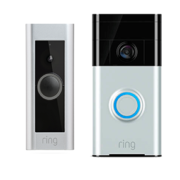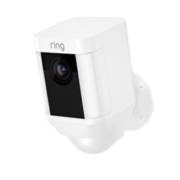How to Prevent People from Hacking Smart Home Devices
If you’ve watched enough spy movies, you’ve probably seen both the good guys and the bad guys hack into computer systems, tap into cameras, deactivate security devices, and other means needed to accomplish their aim without getting caught. Their methods are dramatized for cinematic purposes, but real-life hackers can achieve similar results. Your home probably isn’t a fortified base holding an artifact critical to a mission. However, the real-life hackers may still see it as a target. As one cyber security expert put it, “If it’s digital, it’s hackable.” We surround ourselves with digital technology, and some hackers find ways to take advantage of this by hacking smart home devices.
What Hackers Do
It starts with finding something to hack. Many hackers will use network scanning tools to locate devices. They would then execute various strategies to gain access. Once they’ve accessed one device on the network, it’s easier to hack into others.
They might access the indoor cameras to watch what’s happening inside a home. Finding it empty, they could decide to investigate further. By accessing the smart thermostat, they’re able to see the temperature is set lower than the usual of previous weeks, suggesting that the residents could be out of town. The hacker keeps an eye on the home. When they conclude they’re right about the home being vacant, they decide to take advantage of it. First, they access the cameras, ring doorbell, and alarm system and disconnect them from the Wi-Fi to deactivate them. Then, they tap into the smart locks and let themselves in. When the residents come back from their vacation, they find they’ve been victims of a home robbery.
Now, before you smash your Ring Video Doorbell and swear off all technology, there are things you can do to prevent people from hacking smart home devices.
1. Be Smart with Your Devices
Preventing people from hacking smart home devices starts with the devices you choose. When you’re designing your smart home system, get devices that have built-in security features. Many major brands do, but some are safer than others. You will want to do your research and find devices that are less vulnerable. If you’ve already built your system and find out you chose less secure devices, it may be time to upgrade.
Whatever devices you end up using, you will regularly want to check for software and firmware updates. Often, hackers can attack outdated encryption algorithms to get into devices. If you keep yours updated, that’s one less thing hackers can use against you.
2. Be Smart with Your Logins
If you have weak logins, it will be easier for a hacker to get into your devices and the accounts associated with them. Use strong passwords, and don’t use the same password on multiple accounts. If you do, a hacker will only need to crack one password. Then, they can easily get into all your other accounts that use that password. Have you been reusing the same password because you know you won’t remember a bunch of different passwords? A password manager app is a great way of securely storing your passwords so you can look them up rather than going through the “forgot password” process whenever you need to log in.
To add another layer of security, use two-factor verification wherever possible. This way, a hacker might crack the password to one of your accounts, but they won’t get the text or email code they need to complete the login.
3. Be Smart with Wi-Fi
Sometimes, hackers will access smart devices and use this as a bridge into hacking laptops and other devices that may contain more personal information than your smart fridge does. To prevent this, you may want to set up a secondary network for guests and smart home devices that is separate from the network you use for your computers. When connecting devices to this smart home network, use PoE (Power over Ethernet) connections rather than Wi-Fi as much as possible. This adds an extra layer of security, making it so a hacker would need to go through the added step of figuring out how to get through your network’s firewall before they would be able to start trying to hack into the device. When you are away from home, never use public networks to remotely access your smart home devices. This makes a hacker’s job even easier. Instead, use your cellular data, a far safer method than the unsecured public networks.
In the case of your home security system, you can prevent aspects of it from being connected to your network altogether if you get a cellular monitoring system rather than one with a Wi-Fi connection. With cellular monitoring, a cellular module is built into the control panel, and it uses cellular and radio-based technology to communicate with the sensors rather than Wi-Fi. This makes it so hackers can’t affect your alarm system by hacking into your Wi-Fi network, and they can’t turn it off by cutting power or phone lines. Will cellular monitoring, you will know your home is always protected when you are away from home.










Leave a Reply
Want to join the discussion?Feel free to contribute!